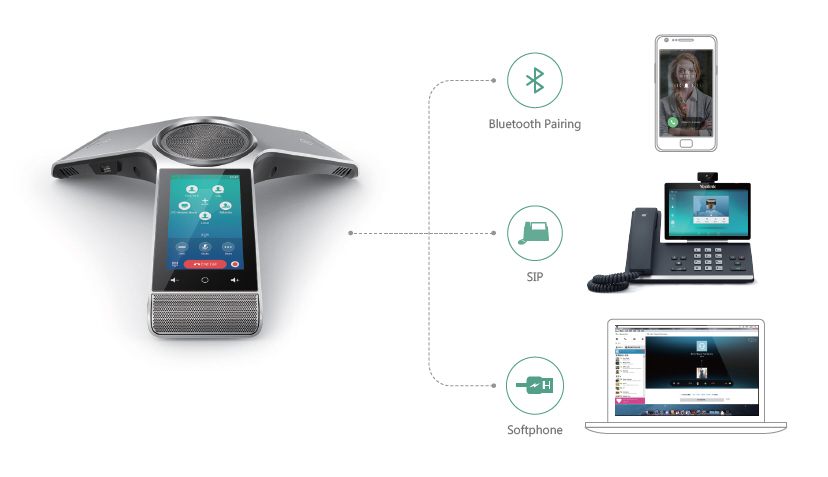Introduction
In the rapidly evolving landscape of remote work, effective communication tools have never been more crucial. Companies are shifting from traditional office settings to flexible work environments, which necessitates innovative solutions to keep teams connected. The advent of Voice over Internet Protocol (VoIP) technology has revolutionized how organizations communicate, especially in a remote setting. This article delves deep into VoIP phone systems for remote work and explores how they enhance communication, streamline operations, and foster collaboration.
VoIP Phone System: A Comprehensive Overview
What is a VoIP Phone System?
A VoIP phone system allows users to make voice calls using the internet rather than traditional telephone lines. This technology converts voice into digital signals, transmitting it through the internet. VoIP phone systems can integrate with various devices—smartphones, computers, and dedicated VoIP phones—offering flexibility and convenience.

How Do VoIP Phone Systems Work?
VoIP works by breaking down voice audio into packets of data that are sent over the internet. When a call is made, these packets are transmitted to the recipient's device, where they are reassembled into audible sound. The process involves several components:
- Internet Connection: Reliable broadband is essential for seamless communication. VoIP Service Provider: Companies like RingCentral and Zoom provide the necessary infrastructure. Hardware: Depending on preferences, users can opt for specialized VoIP phones or use existing devices.
Benefits of Using a VoIP Phone System for Remote Work
Cost-Effective: Traditional phone systems often come with hefty bills due to line rental fees and long-distance charges. VoIP reduces costs significantly. Scalability: Businesses can easily add or remove lines as needed without major investments. Flexibility: Users can make calls from anywhere with an internet connection. Advanced Features: Many VoIP systems come with features like voicemail-to-email, call forwarding, and video conferencing capabilities.Understanding Remote Work Dynamics
The Shift Towards Remote Work
The global pandemic accelerated a trend toward remote work that was already gaining traction. Organizations recognized the benefits of allowing employees to work from home—improved productivity, reduced overhead costs, and increased employee satisfaction.
Challenges in Remote Communication
While remote work offers numerous advantages, it also presents challenges:
- Lack of face-to-face interaction Miscommunication due to reliance on text-based messaging Difficulty in managing team dynamics
How VoIP Address These Challenges
VoIP phone systems bridge the gap between remote workers by providing a platform for clear communication. Features such as video conferencing help recreate the personal touch lost in virtual interactions.
Key Features of VoIP Phone Systems for Remote Work
Video Conferencing Capabilities
Video conferencing has become essential for meetings and collaborative projects. Leading VoIP providers offer integrated video services that allow teams to connect visually.
Call Routing and Forwarding Options
Remote team members may not always be available at their desks. With intelligent call routing features, calls can be forwarded to mobile devices or other team members.
Unified Messaging Solutions
VoIP systems often include unified messaging features that consolidate various forms of communication—voice messages, emails, texts—in one interface.
Integration with Other Tools
Many businesses rely on project management and customer relationship management (CRM) tools. A robust VoIP phone system integrates seamlessly with these platforms for enhanced workflow efficiency.
Choosing the Right VoIP Phone System for Your Team
Assessing Your Team’s Needs
Before selecting a VoIP system, evaluate your team's size and specific communication needs:
- How many users will require access? What features are essential? Will you need international calling options?
Comparing Different Providers
Not all VoIP providers offer the same features or pricing models. Popular options include:
| Provider | Key Features | Pricing Model | |-----------------|------------------------------------|----------------| | RingCentral | Video conferencing & SMS | Monthly plans | | Zoom | Video-first solution | Pay-per-use | | Nextiva | CRM integration & analytics | Tiered pricing |

Pricing Considerations
Most providers offer tiered pricing based on usage or features required. Be sure to factor in potential add-on costs before making your final decision.

Implementation Strategies for Successful Adoption
Training Employees on New Technology
Successful implementation hinges on proper training. Provide employees with resources—tutorials or workshops—to familiarize them with new tools.
Establishing Clear Communication Policies
Define clear guidelines around communication practices within your organization to minimize confusion among team members regarding expectations and protocols.
Enhancing Collaboration Through VoIP Phone Systems for Remote Work: Enhancing Communication
Communication must be seamless across different platforms when working remotely; this is where collaboration tools integrated with your VoIP system shine:
Easy file sharing during calls Collaborative whiteboards during video conferences Real-time chat options during meetingsBy enhancing collaboration through these methods, your team will feel more connected—even miles apart!
Best Practices for Using VoIP Phone Systems in Remote Working Environments
Ensure a stable internet connection. Regularly update software to access new features and security enhancements. Encourage feedback from employees about their experience using the system. Monitor usage analytics offered by your provider to gauge effectiveness.FAQs About VoIP Phone Systems for Remote Work
1. What are the primary advantages of using a VoIP phone system over traditional phones? Using a VoIP phone system provides cost savings, flexibility in usage http://lorenzovaxw534.theburnward.com/analyzing-the-cost-benefit-ratio-of-implementing-sip-trunks-in-your-business across multiple devices, advanced features like voicemail-to-email integration, and scalability according to business needs.
2. Can I use my existing phones with a new VoIP service? Yes! Most modern phones can be adapted to work with new networks through adapters or software installations that support SIP (Session Initiation Protocol).
3. Is it possible to have video calls using a standard VoIP phone? Typically no; however, many service providers offer integrated video solutions accessible via compatible apps or software on other devices such as laptops or tablets.
4. How secure are communications made through a hosted VOiP service? Most reputable providers implement encryption protocols ensuring privacy during calls while also adhering strictly to industry compliance standards protecting user data integrity against breaches.
5. Are there any hidden fees associated with switching to VOiP services? It's essential always to read contract terms carefully! While many plans advertise low monthly fees upfront; additional costs could arise depending on desired functionalities such as international calling rates or additional user licenses required by larger companies later down-the-line so ask those questions up front!
6.What happens if my internet goes down while using VOiP services? If connectivity issues occur temporarily affecting service quality; many VOiP providers will allow customers access alternative backup numbers routed directly into respective cells until full restoration occurs ensuring minimal disruption experienced overall among teams needing uninterrupted connectivity during critical periods together!
Conclusion
In summary, adopting a reliable VoIP Phone System is pivotal in enhancing communication within remote teams today! By understanding its workings alongside detailed assessments conducted around unique operational needs—a tailored approach enables organizations not only strengthen internal relationships but also cultivate productive environments rife opportunity—even amidst unprecedented changes brought forth globally! As we continue adapting our lifestyles alongside technological advancements made possible today; investing wisely towards sustainable solutions remains paramount promoting seamless connections moving forward regardless distance separating us all!